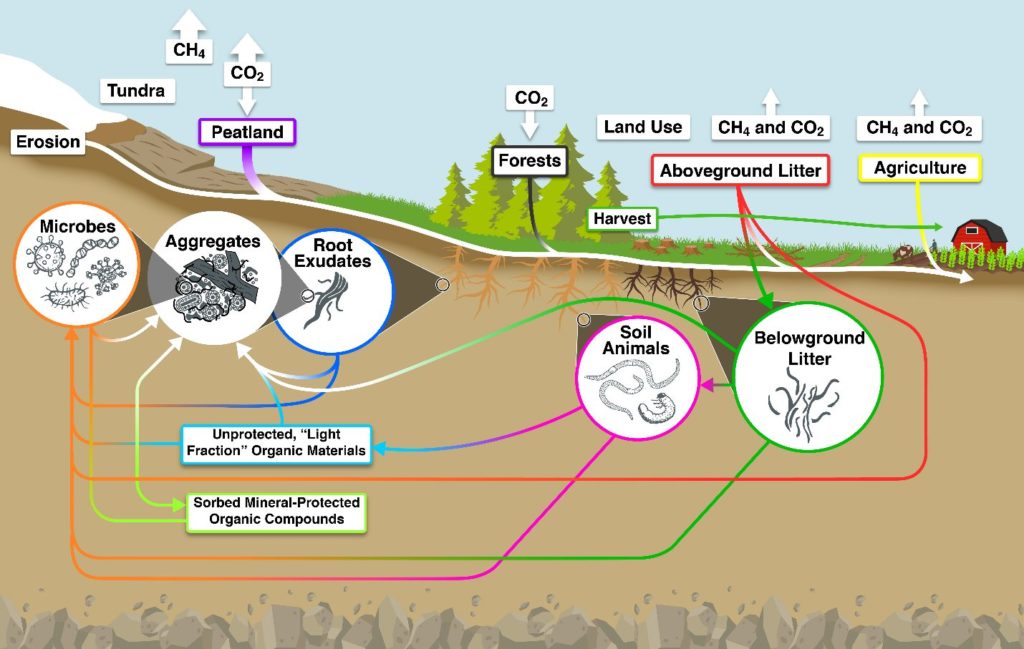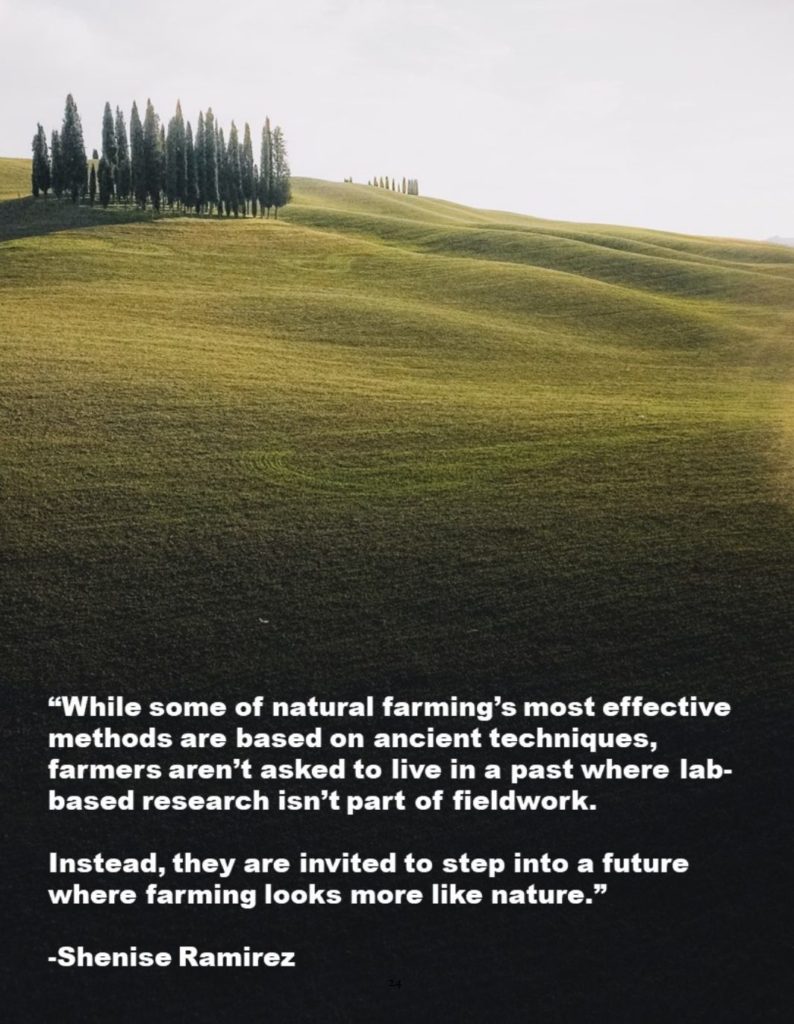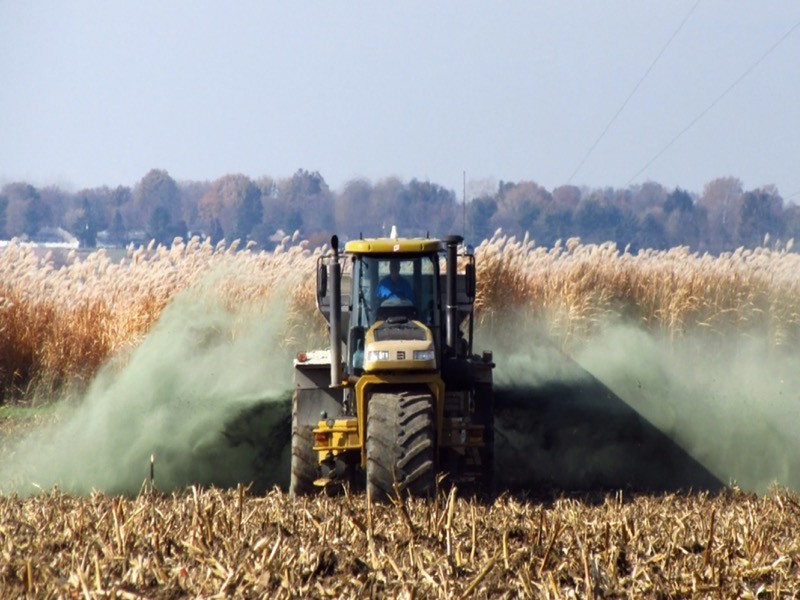Remineralization for a Healthy Planet: RTE’s new white paper
RTE’s latest white paper highlights up-to-date scientific information on remineralization and enhanced rock weathering. Here’s what you can learn.
Researchers, farmers, and climate activists around the world have long-since known about the benefits of soil remineralization and enhanced rock weathering. The results are in and the science is clear: Remineralization techniques can restore, enhance, and maintain soil fertility while capturing carbon dioxide (CO2) from the atmosphere.
Remineralize the Earth (RTE) has recently published a downloadable white paper, available for free on the website. The white paper is a comprehensive review of current research and field trials on remineralization and enhanced rock weathering. This paper not only introduces the direct benefits and co-benefits of soil remineralization, but also explains why rock dust is the solution right under our feet.
A team of researchers and science writers at RTE has condensed the decades of international field trials and extensive empirical journal articles into an informational, accessible white paper.
“Remineralization for a Healthy Planet” is co-authored by research scientists Debra Patskowski, Meteb Mejbel, and Antonio Nilson Zamunér Filho and RTE’s executive director Joanna Campe. Patskowski was a key author on the paper, providing her thorough and thoughtful expertise on petrophysics and insight to the many aspects of soil biology. Readers can find additional work by Patskowski on her Medium page.
Enhanced rock weathering and remineralization are different
In the past few decades, there has been an increase in the number of scientific papers promoting enhanced rock weathering as a climate stabilization technique. While different from remineralization, the two are intimately linked.
Enhanced rock weathering is an artificial process that simulates erosion – the slow, gradual, grinding of rocks into a fine powder that occurs over hundreds of thousands of years. Through the natural weathering process, eroded rock dust eventually makes its way into soils and waterways and undergoes chemical processes that facilitate carbon sequestration. This makes rock dust critical to the Earth’s carbon cycle, as the white paper explains in more detail.
By manually crushing rocks, enhanced rock weathering accomplishes what erosion does, but on a much faster time scale. After rocks are ground into an effective grain size (small, but not too small), the rock powder can be applied and re-introduced to the land; this is soil remineralization. Just one application of rock dust to soil can restore and maintain soil fertility. That is the power of rock dust.
RTE has previously published a rock dust primer, which provides step-by-step instructions for applying rock dust.
Rock dust directly affects soil health and fertility
Introducing rock dust to soils – especially soils that have become depleted in critical nutrients – affects the dynamics of the entire ecosystem: the complex web of microbes, bacteria, and plants.
Soil ecosystems rely on a stable chemical environment. For this reason, adding rock dust to soils can have a demonstrable effect on the health of the ecosystem.
As explained in the white paper, the diversity of the soil ecosystem is responsible for converting minerals into essential nutrients that plants and organisms need to grow and thrive. Some of these nutrients come directly from the soil, such as nitrogen (N), phosphorus (P), and potassium (K). These nutrients are food for plants, and they are also highly responsible for climate stability.
Crops respond differently to rock dust compared to chemical fertilizers
These elements – nitrogen, phosphorus, and potassium – are also the basic components of conventional chemical fertilizers, known as NPK fertilizers.
Farmers have long known about the benefits each of these nutrients plays in promoting plant growth and health. Though conventional fertilizers supply some of the necessary nutrients plants need, they can over-supply nutrients, ultimately harming the ecosystem, while failing to supply important micronutrients.
Plants partly control the rate at which essential nutrients are dissolved into the soils. But applications of NPK fertilizers are not aligned with a plant’s natural uptake. Any remaining chemical compounds that plants cannot absorb are eventually washed away, polluting the waterways.
Remineralization avoids these major pitfalls, releasing nutrients to soils over time, producing greater benefit without the polluting runoff. The nitrogen and other trace elements typically found in rocks offer an effective and efficient alternative to conventional fertilizers, providing the basis for sustainable and organic agriculture.
Nutrition starts with the soil
Soil health and fertility directly affect crop yields, which affects the world’s food supply. It also improves crop nutrition, which can affect food demand.
The global population is expected to reach 9.8 billion people by 2050; meeting the growing need for food access is a priority – especially when we consider the estimated 854 million people who are now either undernourished or driven into poverty and hunger.
Hunger is a global problem, currently without any substantial, lasting solutions. The issue of feeding the world’s population has been partially addressed via conventional agriculture practices, in part aimed at increasing crop yields.
However, conventional agriculture tends to over rely on commercial fertilizer to produce these yields. This negatively affects both the crops and the humans that consume them.
Evidence cited in the white paper suggests that an overreliance on fertilizers and pesticides may be diminishing the nutritional quality of crops. Data from studies suggest that 40% of adults in the US are lacking in calcium, magnesium, and vitamins A,C,D, and E.
Addressing nutrient density in our foods could help solve inadequate nutrition in the United States and elsewhere. As reviewed in the white paper, malnutrition starts with the soil. Reintroducing critical minerals to depleted soils would benefit both plants and people.
Rock dust and the fight against climate change
The white paper concludes with a spotlight on how enhanced rock weathering can aid in combating climate change.
Climate change is overwhelmingly acknowledged as a crisis by the scientific community. Researchers, politicians, and advocates serious about the climate crisis recognize that a de-emphasis on fossil fuels and a switch to renewable energy is insufficient to slow and reverse the effects of a warming planet.
To see a noticeable improvement to the planet’s health, carbon and other greenhouse gasses need to be actively removed from the atmosphere. This is typically referred to as “carbon drawdown” or “carbon sequestration.”
Climate models tentatively predict a grim future, suggesting that we need to reduce atmospheric carbon dioxide by up to 10 Gt (gigatons) per year by 2030 to avoid the worst effects of climate change. The technologies and techniques exist to meet this target; the issue has been – and still is – with implementation and scale.
Remineralization has the potential to actively capture carbon and store it in the soil for thousands of years, while also improving soil health and fertility. When combined with sustainable forestry techniques – which make use of the Earth’s natural carbon sink – CO2 reduction can be highly effective.
While current field tests are limited in the data they provide, some researchers estimate that one ton of basalt rock dust can sequester 0.3 tons of CO2. However, consistent data, including proper experimental controls, make it difficult for scientists to generalize these estimates.
The type of rock, method of application, and application rates vary; there is no one-size-fits all when it comes to meeting the needs of a particular ecosystem, and these factors all affect carbon capture potential.
Furthermore, rock dust is not applied in a vacuum; it does not act alone. The entire soil ecosystem – microbial activity, plant mass above and below ground, and organisms large and small – interact to do the work that the planet needs to thrive.
As stated in the white paper, “rock dust stimulates ecosystems…looking at the ecosystem as a whole potentially doubles the amount of carbon dioxide sequestered by a single application of rock dust.”
With these factors in mind, researchers and policymakers should recognize the viability of rock dust as a low-cost technology with the potential to scale up to meet the needs of global carbon reduction. But first we need to invest in this research.
Costs and life cycle analysis
A flurry of papers analyzing enhanced rock weathering have recently been published, including major empirical journals like Nature. While important for shedding light on a promising climate stabilization technique, many of these studies are theoretical, using modeling methods to predict how much rock dust (in gigatons) per acre is needed to maximize benefits.
This is a critical step in “scaling up” remineralization techniques, but it is not the only step needed to move towards a sustainable future: researchers and organizations will need to invest in field trials to assess the entire enhanced rock weathering and remineralization process – from start to finish.
Life cycle analyses are a useful tool for measuring the total environmental impact of a specific technique. Researchers need to know the ‘cradle to grave’ impacts of implementing and scaling up rock dust application. This will help inform smart, climate-focused solutions.
The future of rock dust
Research institutions, laboratories, and universities around the world have recognized the potential of rock dust, including the relationship between minerals and soils. It will take a dedicated effort to invest in enhanced rock weathering projects and to measure the long-term effects of remineralization.

Universities in the U.S. like the University of Illinois, UC Davis, UC Irvine, Cornell and Yale have initiated field trials and laboratory experiments in an attempt to investigate both real-world and controlled outcomes of rock dust on the ecosystem. As it stands, it is difficult to quantify weathering rates and rock dust application. But different projects are underway, and scientists are interested in developing new techniques to manage and enhance carbon removal.
Outside the U.S., research is ongoing at the University of Sheffield and Newcastle University in the UK and several universities and EMBRAPA in Brazil.
Rock dust is a simple, scalable solution to improve soil fertility and stabilize the climate. It is estimated that it has the potential to remove 4 gigatons of CO2 from the atmosphere every year, if implemented at a global level. However, experts believe that this may be an under-estimate. As it stands, the future of rock dust is contained to its potential. Let’s realize that potential and go beyond the status quo, moving toward a more promising future.
Meghan Willcoxon is a cognitive science researcher at Brown University. Her research investigates the ways we as pedestrians interact with each other in a crowd. Meghan has a passion for environmental advocacy, as well as puns.
Support us on Patreon
Thank you for joining us today! Please become a member of RTE and support us on Patreon. Unlike many larger organizations, we work with a team of determined and passionate volunteers to get our message out. We aim to continue to increase the awareness of remineralization to initiate projects across the globe that remineralize soils, grow nutrient dense food, regenerate our forests’ and stabilize the climate – with your help! If you can, please support us on a monthly basis from just $2, rest assured that you are making a big impact every single month in support of our mission. Thank you!












Jean Paul Joseph Dubé
October 26, 2022 (10:13 am)
I totally agree with this research. We need to open the public eyes to this wonderful gift from mother earth. So, please keep spreading the word. Excellent job!